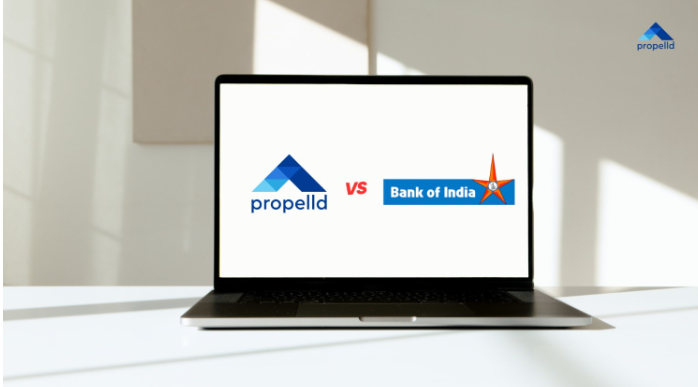When planning to finance your education through a loan, understanding the various charges involved is crucial for making informed decisions. Among these costs, processing fees often catch borrowers off-guard, adding to the overall expense of their educational journey.
What is a Processing Fee?
When you apply for an education loan, there are a few upfront costs you should know about. One of the main charges is the processing fee.
A processing fee is a one-time charge you pay to a bank or financial institution when you apply for an education loan. It is an upfront cost for handling your loan application, including checking your documents and processing your request. This fee is usually paid at the time of application or when the loan is disbursed.
Types & Calculation of Processing Fees
Different lenders have varying approaches to structuring their fee systems, making it essential to understand how these charges work. Processing fees for education loans can be structured in two main ways: as a flat amount or as a percentage of the total loan amount.
- Flat Fee Structure: Some lenders charge a fixed amount regardless of your loan size. This could range from ₹5,000 to ₹25,000 depending on the institution and loan type.
- Percentage-based Structure: More commonly, lenders charge processing fees as a percentage of the loan amount, typically ranging from 0.5% to 2.5%. For instance, if you're borrowing ₹10 lakhs and the processing fee is 1%, you'll pay ₹10,000 as the processing charge.
The timing of payment varies among lenders. Some require payment at the time of application, while others deduct it from the loan amount during disbursal. It's important to note that processing fees are generally non-refundable, even if your loan application gets rejected.
Education Loan Charges Beyond Processing Fees
Education Loan Documentation & File Charges
Beyond processing fees, lenders may charge extra for handling and maintaining your loan documents, including verification, file maintenance, and administrative work. Fees vary by lender public banks often charge less than private banks or NBFCs and may be included in processing fees or billed separately. These charges are usually upfront and should be factored into your initial cost calculations.
Loan Sanction & Administrative Charges
The loan approval process involves several verification steps that incur additional costs. Sanction and administrative fees cover credit checks, income verification, collateral evaluation, employment and academic record checks, and co-applicant verification. GST at 18% typically applies, increasing upfront costs, and some lenders may charge separately for legal or technical document verification, especially for secured loans.
Hidden & Additional Charges in Education Loans
Beyond standard fees, several hidden charges can increase your loan cost. These include GST on processing fees, part-prepayment or foreclosure penalties, EMI bounce fees, duplicate statement charges, late payment fines, FOIR-related costs, and loan restructuring fees. Always review the loan agreement and confirm all potential charges with your lender to avoid surprises.
How to Compare Processing Fees & Charges
Making an informed choice requires evaluating the complete cost structure rather than focusing solely on interest rates. When comparing education loan offers from different lenders, assess the full fee structure including processing fees, documentation charges, file handling fees, and potential hidden charges.
Create a comparison chart that includes the total upfront costs, ongoing charges, and penalty structures for each lender. Consider the refund policies for rejected applications and check if any fees are waived for specific customer categories. Sometimes a loan with a slightly higher interest rate but lower processing fees might be more economical overall, especially for smaller loan amounts.
Tips to Reduce or Negotiate Processing Fees
Saving money on processing fees requires strategic planning and knowing the right approach to negotiations. Here are proven strategies that can help you reduce or eliminate these upfront costs:
- Time Your Application Strategically: Apply during festive seasons, promotional periods, or when banks are running special offers. Many lenders waive processing fees during Diwali, New Year, or education loan campaigns.
- Leverage Your Credit Profile: If you have a good credit score or are bringing substantial business to the bank, use this as leverage in negotiations. Banks value creditworthy customers and are often willing to waive fees.
- Explore Institution-Specific Benefits: Check if your educational institution has tie-ups with specific banks offering fee waivers. Many premier colleges and universities have partnerships that benefit their students.
- Build Banking Relationships: Having existing accounts, family connections, or being a preferred customer can significantly help in fee negotiations. Banks value long-term relationships.
- Use Competitive Offers: Approach multiple lenders and use competitive offers as leverage. Banks often match or beat competitor rates and fees to win your business.
- Inquire About Academic Performance Waivers: Some lenders offer fee waivers for students with exceptional academic records or those pursuing courses from top-ranked institutions.
Education loan processing fees are just one part of the loan journey, but understanding them can make a big difference in your finances. These upfront charges, along with hidden fees and repayment terms, can impact the overall cost of your loan. By comparing lenders, reviewing terms carefully, and negotiating fees when possible, you can make a smarter, more cost-effective choice.
At Propelld, we guide students through the entire education loan process, helping you understand all costs, avoid surprises, and choose a loan that fits your needs ,so you can focus on achieving your educational goals with confidence.












.svg)